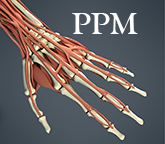March 6, 2014 | Posted in Uncategorized | By drsmespinoza
Comments Off on 3-7-2014
Assignment:
1. finish your project and email it to mespinoza@atlanta.k12.ga.us
2. Take Cornell style notes on the following article:
E.Q. What are common causes of hip sprains?
Hip strains in sports: Common causes, symptoms and treatment of hip strains
By David Mangusan Jr., PTRP, Mar 8, 12:35 pm EST
Hip strains are common in sports activities that require the athlete to perform sudden movements such as running and jumping. Hip strains happen when any of the muscles or the tendon surrounding or attaching to your hip is either stretched beyond its limit or torn, causing symptoms. Most cases of hip strains can be treated with rest, ice, medication and physical therapy. Severely torn muscles may need to be surgically repaired.
Common Causes of Hip Strains
Hip strains occur as a result of any of your surrounding hip muscles or tendon becoming overly stretched. Sometimes, tearing of the fibers, either partial or complete, can also occur depending on the severity of your injury. In athletes, a direct blow to any of their hip muscles or overstretching can cause strains. In others, their hip strain may be associated with repetitive use or overuse of their muscles.
Athletes who have had injury to their hip muscles are at risk having one again. Not warming up and doing stretching exercises before a strenuous activity may also put you at risk for hip strains. Sports activities at risk for hip strain include football, soccer, rugby, basketball, and long distance running or sprinting.
Symptoms
The most common symptom of a hip strain is pain over the involved muscle. Your pain may worsen if you try to move your injured hip. Other symptoms may include swelling, especially with tearing of the muscle fibers; tenderness at the site of stretch or tear; you may have muscle weakness; and bruising. Sometimes, you may hear a “pop” at the time of your injury, which may indicate that a muscle or tendon is torn.
Common Hip Strain Treatments and Rehabilitation
Most cases of minor hip strains can be effectively managed with rest, ice, compression and elevation (RICE therapy). Do not continue playing your sport as this may worsen your injury. Avoid movements that add stress to your injured muscle. Rest and apply an ice pack over your injured muscle for 20 minutes per application to help relieve your pain and reduce your swelling. You can do icing 3 to 4 times daily for the first few days following your injury or until swelling has subsided.
Apply a compression or elastic bandage to help reduce swelling. If you are unsure of how to properly do bandaging, ask a trained professional, such as your physical therapist or doctor to do it for you. Elevate your injured limb above the level of your heart while resting. Taking an over the counter pain medication like ibuprofen or acetaminophen may help with your symptoms.
You can perform simple hip range of motion exercises, stretching and strengthening exercises once your symptoms go away. Your physical therapist can provide you with a list of safe exercises that you can perform at home. Your therapist can teach you how to safely do those exercises.
Surgery may be recommended for a severely torn muscle. You may also be advised to use crutches for a while until your muscle heals.
About the Author: David Mangusan Jr. is a licensed physical therapist and an instructor at the University of the Cordilleras in Baguio City, Philippines.
References:
Hip Strains. Website, American Academy of Orthopaedic Surgeons (AAOS)
Physical Therapy for Hip Pain. Website, Physical Therapy (PT) Notes
Sprains and Strains. Website, National Institute of Arthritis and Musculoskeletal and Skin Diseases (NIAMS)
